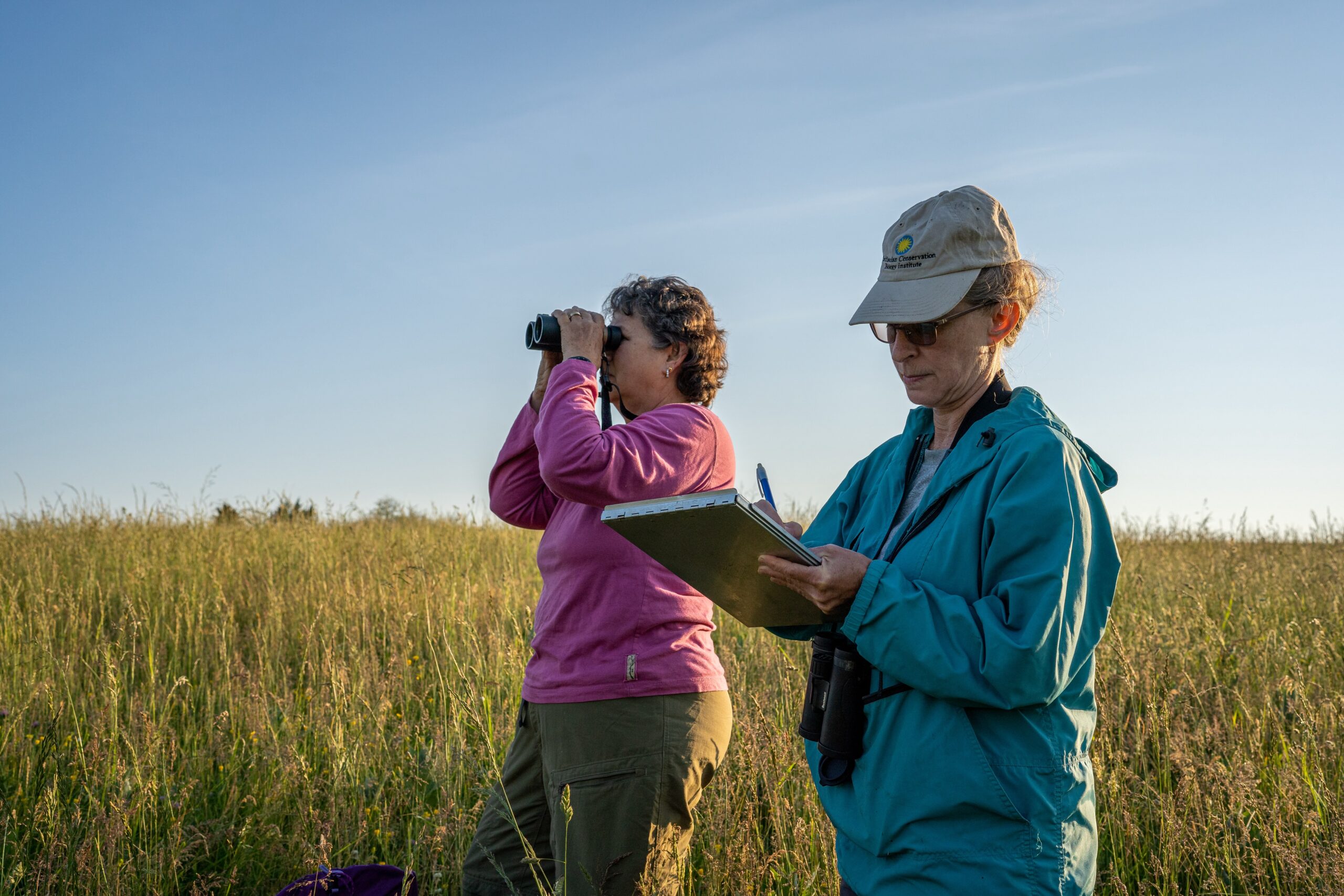
Community scientists conducting a grassland bird survey in Virginia. Photo credit: Hugh Kenny/Piedmont Environmental Council
Your eBirding data helps create tools that can be used to further conservation, inspire support, and inform ecological management strategies. eBird in Action is a segment which shares the conservation stories made possible because of your contributions. This edition comes from the Cornell Lab’s Land Trust Bird Conservation Initiative (LTBCI).
A comprehensive study of bird population changes in North America found that grassland birds have declined by 53% since 1970; a main factor driving this decline is the loss of habitat. Species such as Eastern Meadowlark, Bobolink, Grasshopper Sparrow, and Northern Bobwhite are disappearing across the United States, but collaboratives like the Virginia Grassland Bird Initiative (VGBI) are helping us understand how working lands can be managed to help bring these birds back.
“Through this program, we’re demonstrating that conservation and agriculture can go hand in hand,” says October Greenfield, Co-Coordinator of VGBI. Because working lands cover about a third of Virginia, there are significant opportunities for conservation in the state—and for showing that land management decisions can have profound effects on the survival of grassland birds.
VGBI was launched in 2021 as a partnership between Smithsonian’s Virginia Working Landscapes (VWL), The Piedmont Environmental Council (PEC), American Farmland Trust (AFT), and Quail Forever (QF). With support from the Cornell Lab’s Land Trust Bird Conservation Initiative small grant program, VGBI has protected more than 3,600 acres of grassland bird habitat across 16 counties in Virginia since its inception.
VGBI offers workshops for landowners and technical service providers to learn about grassland bird habitat, and their novel outreach events called Conservation Speed-Dating Workshops help bring farmers and conservation practitioners together to identify opportunities for enhancing wildlife habitat on working lands. One such opportunity is VGBI’s incentives program, which provides payments to farmers to initially offset some of the possible economic costs of adopting bird-friendly best management practices (BMPs), like delayed haying and summer pasture stockpiling, as farmers work to integrate practices into their long-term production goals.
To help monitor the success of this incentives program, volunteers conduct bird point count surveys on participating farms. Community scientists are recruited and trained by Smithsonian’s Virginia Working Landscapes (VWL); data is collected via eBird and also contributes to VWL’s grassland biodiversity surveys, a long-term effort to understand the factors that impact grassland species. Bird species reports are generated for each property and shared with landowners, and the data collected through these surveys helps inform the best management practices of the future.
According to Greenfield, “All of the work that VGBI is doing would not be possible without the landowners and farmers that we work with; they’re really the ones that are making the difference by implementing these practices and welcoming us onto their properties to do research.” While landowners play an essential role in this effort to protect bird habitat, community scientists do too, by collecting the data that scientists are using to inform recommendations for stewardship of working grasslands in the future.
How you manage your landscape affects birds as well. Learn more about what you can do to help bring birds back, or help scientists understand how birds are affected by environmental changes in your region by contributing to one of the Cornell Lab’s participatory science projects.
Read more about VGBI’s efforts on the Cornell Lab’s Land Trust Bird Conservation Initiative website.
